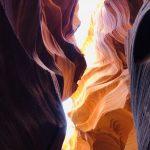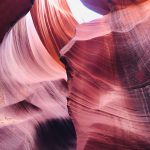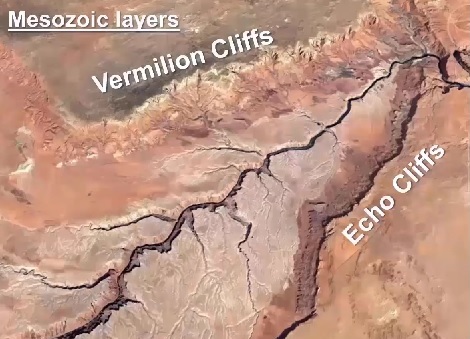Subduction Zone
Regular Member
"I don't know" is never an excuse to insert God into the equation. I would have to look into your example, but without a testable model there is no evidence for the Flood model. In fact that is why they Hydroplane theory is not a theory. There are no clear cut tests that would refute it based upon its own merits.First off I am not relying on any ideas but rather asking or posing questions I think are relevant ones considering what we see. I don't necessarily support the hydroplate theory but rather find some of the things it brings up very interesting. I'm not disputing the evidence for the slow erosion of the canyon as I don't believe in a young earth or a global flood in the first place.
What I am interested in is the strange anomalies in the canyon. For example how the big funnel shape occurs which takes out a massive chunk of land area between Vermilion and Echo cliffs and leaves a large funnel shape like it was washed away in one go. The resulting barbed valleys are too deep and narrow to be eroded. These narrow valleys are said to be cracks that were caused by water pressure from underneath which was forced through the cracks creating the strange marks on the walls.



But there are some huge problems for flood beliefs even though believers fail to present a testable model. Many of their claims are testable and they repeatedly fail. For example fossilized pollen refutes their beliefs. Quite often flood believers try to claim that they sedimentary rocks were deposited durng the flood. Unfortunately for them in many areas pollen refutes their beliefs. Their model would predict that all pollens should be found at all levels, and yet we do not see that. We don't see pollens until the layers that represent the time that those plants evolved in the standard model.
In fact some creationists even recognize that this is a problem. In fact at least one creationist geologist (Clifford Burdick) "found" pollens in Precambrian strata of the Grand Canyon. The only problem was that his work appears to have been very sloppy. Modern pollens can contaminate near surface samples which is why care must be taken in obtaning them. In fact even later creationists repudiated his finds and no one that has retrieved samples properly has been able to repeat his find. This by the way is an example of an experiment not being repeatable thus being a failed experiment:
Burdick
Grand Canyon - RationalWiki
'
However, even creationists have dismissed these claims.[18] Arthur Chadwick, a young-earth creationist:[19]
A total of fifty samples from the same strata which Burdick had studied were processed. All slides were completely scanned. No single example of an authentic pollen grain was obtained from any of these samples. In fact, the slides produced from the Hakatai Formation were in most cases completely free from any material of biologic origin, modern or fossil. [....] No rigorous attempt was apparently made by Burdick to evaluate personally the modern pollen rain in the Grand Canyon. A single sample of soil from near one of the modern collecting sites could have completely satisfied Burdick as to the source of most of the grains he has reported. A typical analysis of a site near where Burdick collected his Hakatai samples yielded the following profile: bisaccate pollen (conifers) 30%; juniper 12%; ephedra 16%; various species of angiosperms (42%) (Siegels,1971). Although the poor quality of the photographs in the plates of Burdick's first paper makes definite assignments impossible, one can approximate the composition of the flora he reports. Of the grains identifiable as pollen or spores in the two papers by Burdick (n=18), 7 or 37% are bisaccates, 2 or 11% are possibly juniper. Ephedra pollen constitute 11% and angiosperms and unassignable grains 34%. Thus even with this small sample size, Burdick's grains approximate the modern pollen rain found in surface sample in the area of the Grand Canyon where he collected his samples.'
Upvote
0

